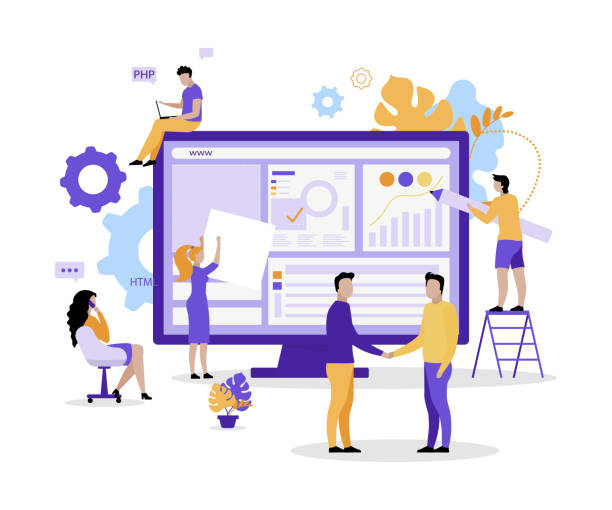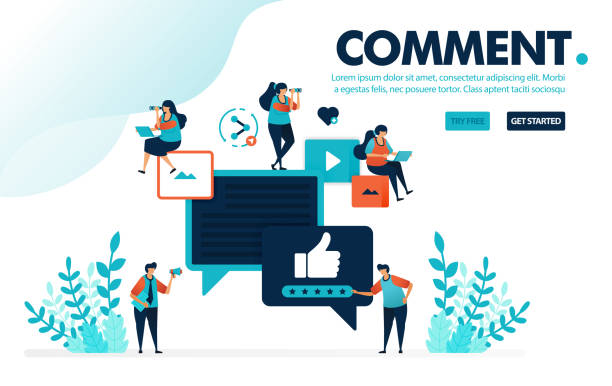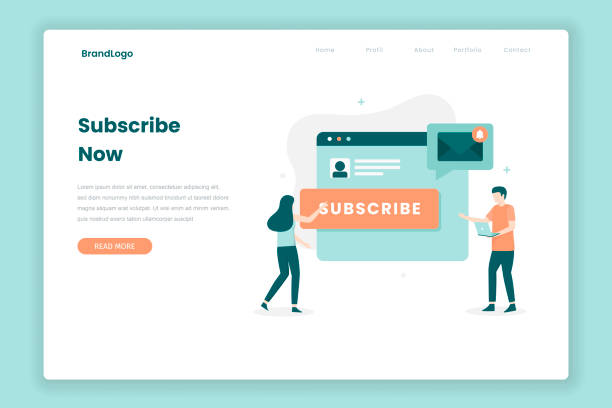Introduction to SEO-Optimized Website Design
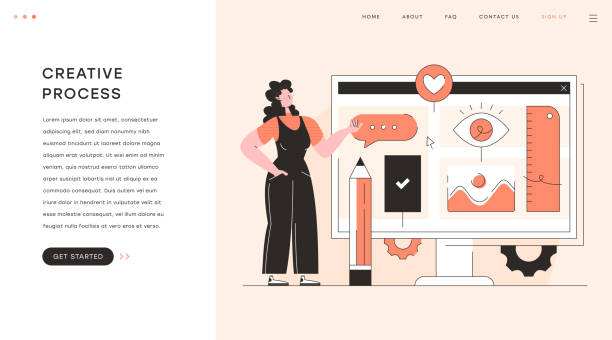
In the current digital age, an online presence is vital for any business or individual seeking visibility.
However, merely having a website does not guarantee success.
Your website must be designed in a way that it can be identified and ranked by search engines like Google.
This is where the concept of SEO or search engine optimization comes into play.
SEO-optimized website design not only means adhering to technical principles but also includes producing valuable content, providing a suitable user experience, and having a correct website structure.
This is a complex and multifaceted process that requires specialized knowledge and continuous updates.
The main goal of #SEO_Website_Design is to increase #Organic_Traffic and improve #Visibility in search results.
When users search for keywords related to your business, your website should appear on the first pages of the search results.
This means increasing the chances of attracting potential customers and converting them into actual customers.
This topic is not limited to keywords; it also includes optimizing site loading speed, responsiveness for various devices, and website security.
All these factors directly affect SEO ranking and user experience.
In this article, we will comprehensively and practically discuss various aspects of website design optimized for search engines.
From basic and explanatory topics to specialized details and practical guides, all aspects will be covered to provide a complete understanding of the importance and methods of achieving a successful SEO-optimized website.
Remember that SEO is a long-term journey, and its results appear gradually, but it is worth the investment.
Are you frustrated with the low conversion rate of your online store?
Rasaweb is your definitive solution with professional e-commerce website design!
✅ Increase your sales and revenue
✅ Unparalleled user experience for your customers
⚡ Get a free consultation now!
Why is SEO Crucial for Online Presence?
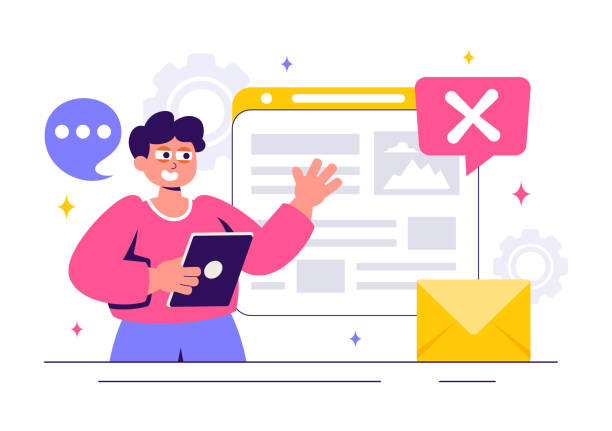
In a world where billions of websites are active on the internet, merely having an online presence is not enough; it’s important to be seen.
Search engines are the main gateways for users to websites.
Over 90% of online experiences begin with a search.
If your website does not appear on the first pages of search results, you will practically be invisible to most users.
This is where the importance of SEO-optimized website design reveals itself.
SEO helps you attract targeted and high-quality traffic to your website.
People who reach your site through organic search are often looking for information or products that you offer, so the likelihood of converting them into customers or followers is much higher.
This type of traffic, unlike paid advertising, is sustainable and more cost-effective, and over time, it can generate significant profitability.
For this reason, investing in website optimization for search engines is a smart decision for any online business.
In addition to attracting traffic, SEO also helps build credibility and trust for your brand.
When Google ranks your website highly, it signifies an endorsement of your credibility and expertise in the relevant field.
Users have more trust in top search engine results, and this trust can lead to customer loyalty.
Ultimately, the SEO-optimized website design process not only helps improve your ranking in search results but also, by enhancing user experience and site speed, increases visitor satisfaction, which in turn creates a positive cycle and leads to long-term success.
Key Technical Aspects in SEO-Optimized Website Design
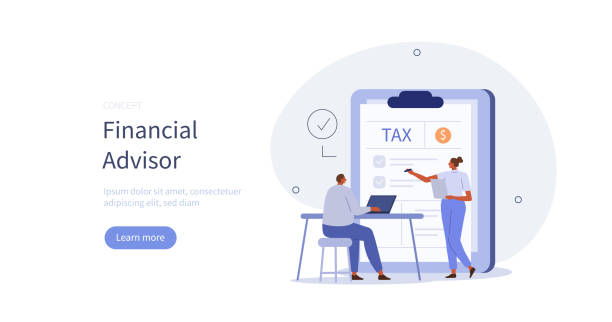
Success in SEO-optimized website design is not merely limited to engaging content; the technical infrastructure of the website also plays a vital role.
Technical SEO aspects help search engines properly crawl, index, and better understand your website’s content.
One of the most important of these factors is site loading speed.
Slow websites not only provide a poor user experience but are also ranked lower by search engines.
Optimizing images, utilizing caching, compressing files, and choosing suitable hosting can help improve speed.
The website’s URL structure is also very important.
Short, descriptive URLs that include relevant keywords are more understandable for both users and search engines.
Using an XML Sitemap helps search engines easily discover and index all pages of your website.
Also, the robots.txt file is a tool that allows you to control which parts of your site are accessible to search engine crawlers and which are not.
Website security using an SSL certificate (HTTPS) is also an important ranking factor.
Google prefers websites that use HTTPS over those that do not.
Finally, clean and semantic HTML code structure helps search engines better understand your content.
This includes proper use of Heading tags (h1, h2, h3), Alt tags for images, and appropriate meta tags.
All these technical elements form the fundamental basis of a successful SEO-optimized website design, without which even the best content will hardly be seen.
In the following, you can see a table of the technical SEO checklist:
| Technical SEO Factor | Description | Importance |
|---|---|---|
| Site Loading Speed | Time required for full page content to load | Very High (User experience and ranking) |
| HTTPS Protocol | Security of communication between user and server | High (Google ranking factor) |
| Optimized URL Structure | Understandable addresses including keywords | Medium (Readability and crawling) |
| XML Sitemap | A file to help search engines discover pages | High (Indexing) |
| Robots.txt File | Control crawler access to site sections | Medium (Crawl management) |
| Semantic HTML Code | Correct use of Heading tags, Alt tags, meta tags | High (Content understanding) |
Content Strategy for SEO

Content is king in SEO, but merely having content is not enough; your content must be thought-provoking, specialized, and educational to both attract users and convince search engines that your website is a credible source.
In SEO-optimized website design, content strategy begins with keyword research.
You need to know what your users are searching for and then produce content that addresses those needs.
This research involves finding high-volume keywords, Long-Tail (multi-word) keywords, and competitor analysis.
After identifying keywords, it’s time to produce content.
Content should be comprehensive and in-depth, covering all aspects of the topic.
Use engaging titles, subheadings, lists, and images to increase content readability.
Content length is also important; longer content (over 1000 words) often performs better in rankings because it indicates comprehensive topic coverage.
Don’t forget that content should be unique and original, and avoid plagiarism, as search engines penalize duplicate content.
Regular content updates and revisions are also a vital part of SEO strategy.
Outdated information may reduce your credibility, so synchronize your content with the latest information and trends.
Using internal linking within content helps users and search engines find other relevant pages on your website, which significantly aids in improving site structure and distributing SEO value (Link Equity).
The goal of this strategy is to create a rich and relevant content environment that keeps users on the site for a long time and provides them with real value, which is one of the main pillars of SEO-optimized website design.
Tired of losing customers due to your e-commerce site’s outdated appearance or slow speed? The expert team at Rasaweb solves these issues with professional e-commerce website design!
✅ Increase customer trust and your brand’s credibility
✅ Blazing speed and excellent user experience
Get a free consultation with Rasaweb now ⚡
User Experience (UX) and Its Impact on SEO

In recent years, the relationship between user experience (UX) and SEO has become increasingly evident.
Search engines, especially Google, have adjusted their algorithms to rank websites that offer a better user experience higher.
This is logical; because Google’s goal is to provide the best and most relevant results to its users, and a website with poor UX, no matter how good its content, cannot provide an optimal user experience.
Therefore, SEO-optimized website design today also means designing a site with excellent UX.
Various factors in UX affect SEO.
One of the most important is Core Web Vitals, which includes metrics such as LCP (Largest Contentful Paint) for loading speed, FID (First Input Delay) for interactivity, and CLS (Cumulative Layout Shift) for visual stability.
Improving these metrics directly impacts SEO ranking.
Easy and intuitive navigation on the website is also of high importance.
Users should be able to easily find the information they need and move from one page to another.
Clear menu structures, use of Breadcrumbs, and logical internal linking help improve navigation.
Responsive Design, which correctly displays your website on all devices including mobile and tablet, is another very important factor.
Given the increasing use of mobile for searching, Google prioritizes Mobile-First websites.
A low Bounce Rate and long Dwell Time also indicate user satisfaction with content and user experience, which directly affects SEO ranking.
In summary, a website optimized for search engines is one that best responds to the needs and expectations of its users, and this is what search engines are looking for.
Mobile-First Indexing and Responsive Design

With the significant increase in mobile device usage for internet access, Google officially introduced the “Mobile-First Indexing” approach in 2018.
This means that instead of your website’s desktop version, its mobile version will be Google’s primary basis for crawling, indexing, and ranking your website’s pages.
This fundamental change has brought SEO-optimized website design into a new phase and doubled the importance of responsive design.
Responsive design is an approach that allows your website to adapt its layout and content based on the user’s screen size (whether desktop, tablet, or mobile).
This means having a common codebase that adjusts how elements are displayed for different dimensions using CSS Media Queries.
The main advantage of responsive design is that you only manage one version of your website, which makes optimization and maintenance easier.
Furthermore, Google strongly recommends this approach as it provides a consistent user experience across all devices.
Ignoring mobile optimization can lead to a severe drop in rankings and loss of organic traffic, even if your desktop website is excellent.
Factors such as mobile loading speed, clickability of links and buttons without zooming (Tap Target Sizes), font readability, and the absence of hidden content (only displayed in the desktop version) are all very important in mobile-first ranking.
Therefore, every modern SEO-optimized website design must have responsive design and full mobile optimization at its core to ensure long-term success in search results.
Measuring SEO Success and Its Tools
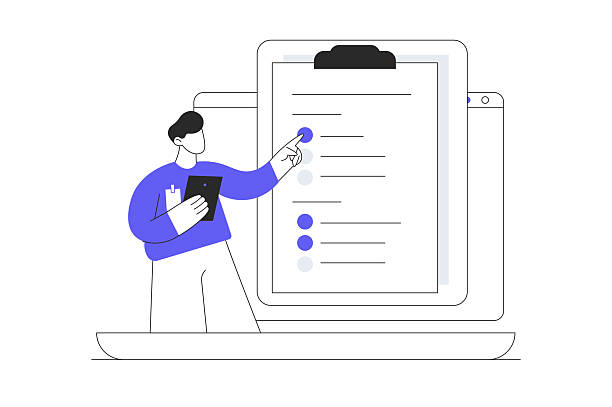
After implementing and executing SEO-optimized website design strategies, the next vital part is measuring and analyzing the results.
SEO is a continuous process, and without precise performance monitoring, you cannot identify your strengths and weaknesses and optimize your strategies.
Fortunately, there are powerful and diverse tools for this purpose that help you monitor key SEO performance indicators (KPIs).
Google Analytics is one of the most essential tools, providing comprehensive information about your website traffic, including the number of visitors, time spent on site, bounce rate, traffic sources (organic, direct, referral), and user behavior on the site.
This data helps you understand how users interact with your website.
Google Search Console is also a vital tool for every webmaster, providing direct information on how Google interacts with your site, including crawl errors, keywords users find you with, page performance in search results, and incoming links to the site.
In addition to these free Google tools, there are paid and more advanced tools like Ahrefs, SEMrush, Moz, and SimilarWeb that offer broader capabilities such as competitor analysis, in-depth keyword research, rank tracking, backlink analysis, and technical SEO auditing.
Using these tools allows you to have a comprehensive overview of your website’s SEO status and make data-driven decisions.
This is an analytical and specialized approach that helps you continuously improve ranking and performance and demonstrates that SEO-optimized website design is not a static process, but requires continuous monitoring and optimization.
In the table below, some of the key metrics for measuring SEO success are presented:
| SEO Metric | Description | Monitoring Tool |
|---|---|---|
| Organic Traffic | Number of visitors from search engines | Google Analytics |
| Keyword Ranking | Website position in search results for specific keywords | Google Search Console, Ahrefs, SEMrush |
| Bounce Rate | Percentage of visitors who view only one page and exit | Google Analytics |
| Dwell Time | Average time users spend on the site | Google Analytics |
| Backlinks | Number and quality of links from other websites to your site | Google Search Console, Ahrefs, Moz |
| Conversion Rate | Percentage of visitors who convert into customers or users | Google Analytics |
Common SEO Mistakes to Avoid

Despite all available guides and tools for SEO-optimized website design, many webmasters and business owners still make common mistakes that can render their SEO efforts ineffective.
Understanding and avoiding these mistakes is as important as adhering to SEO principles.
One of the biggest mistakes is neglecting keyword research.
Producing content without a proper understanding of what the audience is searching for is like shooting in the dark and leads to attracting irrelevant traffic or no traffic at all.
Another common mistake is producing low-quality or duplicate content.
Some try to fill their website with any content, even if it has little value or is plagiarized.
Google severely penalizes low-quality content, and this can lead to penalties and rank drops.
Also, ignoring site speed and mobile user experience is a major error.
As previously mentioned, these factors are now important ranking factors, and failing to optimize them means losing a lot of traffic.
Unhealthy or Spammy Link Building is also one of the dangerous mistakes.
Attempting to buy links or participate in artificial link-building networks can lead to severe Google penalties.
Link building should be organic and based on valuable content.
Failure to regularly update content and technical site infrastructure can also lead to a drop in rankings, as search engines prefer active and up-to-date websites.
Finally, lack of patience and expecting immediate results is also a psychological mistake.
SEO is a marathon, not a sprint, and its results take time.
By avoiding these common mistakes, you can pave your way for a truly SEO-optimized website design and achieve sustainable success.
Tired of losing business opportunities due to lacking a professional corporate website? Worry no more! With Rasaweb’s corporate website design services:
✅ Your brand’s credibility and professionalism will increase.
✅ You’ll attract more customers and sales leads.
⚡ Get a free consultation now to start!
The Future of SEO and Emerging Trends

The world of SEO is constantly evolving and changing.
Search engine algorithms are continuously updated to provide the best results to users.
Understanding these emerging trends is crucial for maintaining and improving your SEO-optimized website design status.
One of the most important trends is voice search.
With the increasing use of voice assistants like Siri, Google Assistant, and Alexa, optimizing for voice search has gained increasing importance.
This type of search is often longer, more conversational, and includes full questions, requiring a different approach to keyword research and content creation.
Artificial Intelligence (AI) and Machine Learning (ML) will also play a prominent role in the future of SEO.
Google algorithms like RankBrain and MUM use AI to better understand the meaning of searches and provide more accurate results.
This means that mere keyword matching is no longer enough; your content must understand the overall intent of the user’s search and respond to it.
Therefore, focusing on content quality and comprehensiveness and producing thought-provoking content becomes more important than ever.
More comprehensive and personalized user experience is another important trend.
Websites should not only be technically optimized but also provide an enjoyable experience for their users.
This includes attractive visual design, easy navigation, and content relevant to the user’s individual needs.
Also, E-A-T (Expertise, Authoritativeness, Trustworthiness) will gain more importance in Google’s content quality assessment.
Content production by experts, referencing credible sources, and information transparency will be key factors in building your online credibility.
Considering these trends, SEO-optimized website design in the future will be more focused than ever on deeply understanding user needs and providing the best possible answers to them.
SEO Support and Maintenance

The process of SEO-optimized website design doesn’t end with launching the website; rather, it’s a beginning.
SEO is a continuous and ongoing effort that requires regular support and maintenance.
The online environment is rapidly changing; search engine algorithms are updated, competitors are active, and user needs evolve.
Therefore, to maintain and improve your ranking in search results, you must continuously monitor and optimize your website.
One of the key aspects of SEO maintenance is regular website performance monitoring.
Using tools like Google Search Console and Google Analytics is essential for checking crawl errors, monitoring keyword rankings, analyzing traffic, and identifying underperforming pages.
This monitoring helps you detect and resolve problems before they become serious.
Content updating is also highly important; outdated content may lose its accuracy or no longer meet user needs.
Reviewing and updating old articles, adding new information, and updating links can help improve their ranking.
Competitor monitoring is also an important part of SEO maintenance.
By analyzing competitors’ SEO strategies, you can find new opportunities to improve your own website.
Also, paying attention to Core Web Vitals and ensuring your website remains in an optimal state regarding speed and user experience is crucial.
Website security must also be continuously monitored to prevent cyber attacks and data loss, as security issues can severely impact SEO ranking.
In summary, success in SEO-optimized website design requires a long-term commitment to continuous maintenance and optimization.
Frequently Asked Questions
| Question | Answer |
|---|---|
| What does SEO-optimized website design mean? | Designing a website that, in addition to an attractive appearance, is technically and content-wise optimized to achieve a higher ranking in search engine results. |
| Why is SEO-optimized website design important? | It increases organic traffic from search engines, improves business visibility, attracts more customers, and ultimately boosts sales. |
| What are the key elements in SEO-optimized website design? | Mobile optimization, high loading speed, high-quality and relevant content, correct use of keywords, appropriate URL structure, and use of title and meta tags. |
| What role does content play in website SEO? | Unique, valuable, informative content with target keywords plays a vital role in attracting users and achieving better rankings in search results. |
| What is Mobile-First Indexing? | A Google approach where the mobile version of a website is prioritized for indexing and ranking. Therefore, website responsiveness for mobile is essential. |
| How can site loading speed be improved? | Image compression, caching, optimizing CSS and JavaScript codes, using a strong hosting provider, and enabling Gzip compression. |
| What is the importance of keywords in SEO? | Keywords help search engines understand the topic of your page and link it to relevant user searches. |
| What role do Title Tags and Meta Descriptions play? | The title tag is the most important element in on-page SEO, and the meta description is a summary of the page’s content that encourages users to click. Both are displayed in search results. |
| How does Internal Linking help SEO? | It helps search engines discover and index different pages of the site and distributes page value across various sections of the site. It also improves user experience. |
| What is the use of a Sitemap in SEO? | It is an XML file that provides a list of all important pages on the site to search engines to facilitate site crawling and indexing. |
And other advertising services from Rasaweb Advertising Agency
Smart Marketplace: A professional solution for improving SEO ranking with a focus on custom programming.
Smart SEO: Revolutionize sales growth with the help of real data.
Smart Advertising Campaign: A dedicated service for growth in campaign management based on marketing automation.
Smart Website Development: A fast and efficient solution for increasing website traffic with a focus on attractive UI design.
Smart Google Ads: Revolutionize website traffic with the help of Google Ads management.
And over hundreds of other services in the field of internet advertising, advertising consultation, and organizational solutions
Internet Advertising | Advertising Strategy | Advertorial
Resources
What is SEO? A Comprehensive Guide for Beginners
Principles of Successful and User-Friendly Website Design
Complete Technical SEO Guide for Ranking Improvement
Content Marketing and Its Role in Improving Site SEO
? To elevate your business in the digital world, Rasaweb Afarin Digital Marketing Agency paves your path to success by offering services such as user-friendly website design, professional SEO, and social media management.
📍 Tehran, Mirdamad Street, Next to Central Bank, Southern Kazeroun Alley, Ramin Alley, No. 6


